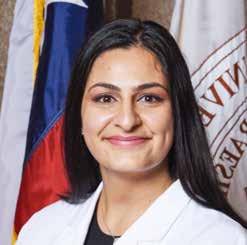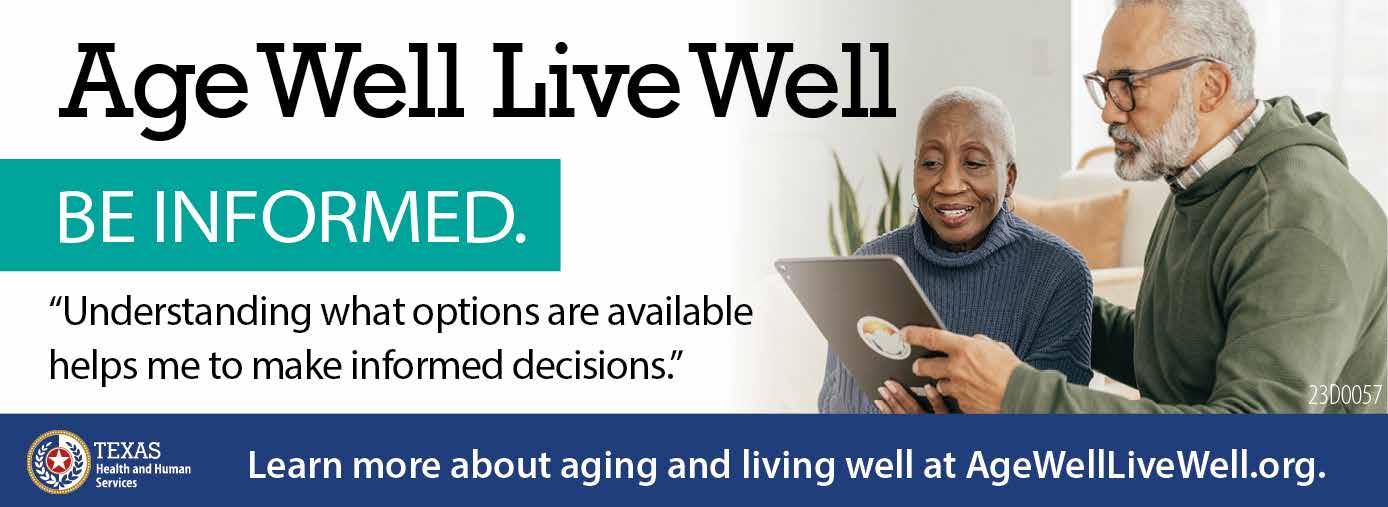Making The Jump: 3 Steps To Behavioral Health Value-Based Care



Physiatrists,
Behavioral health providers face unique challenges to integration and value-based care, such as the lack of consensus on meaningful quality and outcome metrics; limitations on the ability to bill for services by certain providers; and interoperability and sharing of data. Nevertheless, recent federal policy initiatives support a broader adoption of value-based care. For example, the 2022 Medicare physician fee schedule adopted an exception to the “incident to” rules to provide for general (rather than direct) supervision of licensed professional counselors and licensed marriage and family therapists; authorized reimbursement for clinical psychologists and licensed social workers as part of a primary care team; and approved access from mobile units and the use of telecommunications technology in connection with certain opioid use disorder treatments.
These changes position behavioral health providers to engage in strategies to capitalize on the momentum and to stay ahead of the curve as the industry evolves to embrace value-based behavioral healthcare:
Step 1: Continue to prepare the infrastructure necessary to succeed;
Step 2: Partner with physical health providers who are already engaged in value-based care; and
Step 3: Negotiate your own
value-based contracts. These strategies can be staged or engaged in individually or collectively.
1. Prepare the Infrastructure.
To benefit from opportunities for value-based reimbursement and population health management, providers must ensure that they have an infrastructure in place to track and share information between providers and payors. Specifically, providers must have systems in place to:
• access and integrate claims and practice data,
• report on quality metrics,
• identify care gaps,
• inform intervention strategies,
• support real-time patient engagement,

• manage population health, and
• align clinician compensation to drive objectives.
Providers who already have an established infrastructure to access, use, and report data on patient care and outcomes are prepared to jump as opportunities arise to capitalize on value-based care opportunities and

they are prepared to engage with other providers and payors and to clearly communicate the value they bring through measurable, high-quality care. Importantly, preparing to participate in value-based care also supports the management of your existing patient populations for improved outcomes.
2. Partner with Physical Health Providers.
Partnering with physical health providers and networks can provide a first step into value-based care for behavioral health providers who are not yet ready to engage with payers directly. Many physical health care providers have already launched value-based care activities and population health management. Effectively managing behavioral health can reduce costs for co-occurring physical health conditions and may reduce continued fragmentation of health care services. While the research on integrated behavioral health in primary care is not new, the industry has only
PRSRT STD US POSTAGE PAID PERMIT NO 1 HOUSTON TX PERMIT # 1149 AUSTIN TX October Edition 2023 Volume 6 | Issue 10 New Online Tool Helps Medical Providers Identify Hard To Diagnose Breast Cancer See pg. 10 Inside This Issue Ascension Seton’s Approach To Women’s Health Services See pg. 11 INDEX Oncology Research ........ pg.4 Mental Health pg.5 Healthy Heart pg.6 Hospital News pg.8
3 Steps
see
...page 14
Lori A. Oliver, J.D. Kathleen Snow Sutton, J.D. Polsinelli, PC
COURSES
CULTURALLY EFFECTIVE HEALTH CARE:

Get tips and tools for increasing cultural effectiveness in your practice. This course is an essential guide for pediatric health-care providers in Texas.

CHILDHOOD AND ADOLESCENT DEPRESSION: Depression affects up to 20 percent of youth and can have serious consequences. Learn about risk factors, screening, referral and effective management options for this common mental health problem.


MEDICAL TRANSPORTATION PROGRAM TUTORIAL:
Help reduce missed appointments by guiding eligible patients to free transportation. This tutorial is an essential resource for medical and dental office staff.
Austin Medical Times Page 2 October 2023 austinmedtimes.com
more than 100,000 medical professionals who get free CME with Texas Health Steps Online Provider Education. Choose from a wide range of courses relevant to your practice, including short tutorials and podcasts on topics like Medicaid guidelines, ethics and mental health all available 24/7. Learn more at TXHealthSteps.com.
Join
tablet daily
courses
Content on the Texas Health Steps Online Provider Education website has been accredited by the Texas Medical Association, American Nurses Credentialing Center, National Commission for Health Education Credentialing, Texas State Board of Social Worker Examiners, Accreditation Council for Pharmacy Education, UTHSCSA Dental School Office of Continuing Dental Education, Texas Academy of Nutrition and Dietetics, Texas Academy of Audiology, and the International Board of Lactation Consultant Examiners. Continuing Education for multiple disciplines will be provided for some online content.
FEATURED
Take one
to view the CME
you want.
Oncology Research

Embracing Precision Medicine, a Trailblazing Path Forward in Cancer Treatment
By Debra Patt, M.D., Ph.D., MBA Texas Oncology–Austin Central

Unlocking the genetic “secrets” inside cancer cells is revolutionizing oncology. This advancement in medical science is the foundation of precision medicine which provides patients with more personalized and targeted treatment, based on understanding the genetic information of a patient’s cancer. This is especially relevant for Texans who will soon have increased access to the testing needed for precision medicine treatment planning.
Unlike traditional cancer treatments that take a more generalized approach, precision medicine leverages the genetic insights obtained from specialized testing of a patient’s tumor,
known as next generation sequencing or biomarker testing. Every person’s cancer has a unique genetic makeup, including certain cancer biomarkers, which are the genes and proteins on cancer cells. These biomarkers can be tested to learn important details about a specific patient’s cancer. By analyzing the genetic changes within the tumor, physicians can determine the most effective course of action for each individual patient.
A Closer Look at Precision Medicine
One of the remarkable facets of precision medicine is that is transcends the typical focus on cancer types. Regardless of whether the patient’s disease originated as breast cancer, lung cancer, sarcoma, or melanoma, similar cancer-causing genetic changes can be identified across different forms of cancer. Patients who have tumors with common genetic alterations can benefit from treatments that target those shared changes.
Every year, the field of precision medicine makes substantial strides as
researchers continue to unearth genetic variations, prompting the development of new drugs and treatments that home in on changes within tumors. This progress is then integrated into clinical practice, potentially influencing the criteria for clinical trials and treatment protocols.
Applying Precision Medicine to Oncology Care Through Biomarker Testing
Biomarker testing is the cornerstone of how precision medicine is applied in oncology care, and it is integral to developing personalized therapies.
Even with the same type of cancer, cells can have different gene mutations, which may determine how effectively the cancer responds to certain types of

treatment. When a specific biomarker is identified, more effective, targeted therapies can be given to attack those cancer cells.
As technology advances, biomarker testing will become more specific. Physicians may be able to diagnose cancer and check for specific biomarkers from a blood sample without the need for a biopsy. Additionally, biomarkers will increasingly be used to:
• Determine a person’s risk of developing cancer in the future.

• Find cancer at an early stage.
• See if treatment for cancer is effective.
• Check if a patient’s cancer has
Austin Medical Times Page 3 October 2023 austinmedtimes.com Medical Check In Improving customer service with technology As low as $34 / month 800-971-8871 www.medicalcheckin.com Fast Patient Sign In Process Organizes Patients by Reason HIPAA Compliant TX-RAMP Certified Unlimited Data Unlimited Support
see Oncology Research...page 14
AI Tech Accurately Diagnoses Knee Arthritis from Medical Images
AlthoughMany people over the age of 50 develop arthritis of the knee, a painful condition that can make it difficult to do everyday activities like stand, walk or climb stairs. New research published in Nature Digital Medicine on the use of artificial intelligence to analyze medical images demonstrates the potential for improving diagnoses of knee osteoarthritis and predicting a person’s risk of developing it in the future.
A team led by researchers from The University of Texas at Austin’s College of Natural Sciences and Dell Medical School developed an AI model that can diagnose knee osteoarthritis with clinical-grade performance, based solely on images of the knee joint from medical x-rays. One potential application would be incorporating the model into existing software that technicians use to evaluate x-rays, flagging possible cases of knee
osteoarthritis to assist clinicians in making a diagnosis. The goal wouldn’t be to replace human doctors but to assist them.
“Imagine someone goes into the clinic and gets an x-ray for some other reason, and the clinic is running this AI system in the background on every image that automatically diagnoses arthritis,” said Vagheesh Narasimhan, an assistant professor in UT Austin’s Department of Statistics and Data Sciences and Department of Integrative Biology. “We could tell them, perhaps you should consult an orthopedic expert about this condition.”
The study’s co-first authors are Brianna Flynn and Emily Javan, graduate students in UT Austin’s Department of Integrative Biology. Co-senior authors are Narasimhan and Prakash Jayakumar, M.D., Ph.D., assistant professor in the Department of Surgery and Perioperative Care at
UT Austin’s Dell Medical School.

Because arthritis of the knee is caused by the grinding of knee bones (the femur and tibia) against each other as protective cartilage wears down, the size of the gap between the bones is associated with how severe the condition is. This gap, known as the joint space can be used as a clinical biomarker to quantitatively assess disease severity. In their work the researchers were also able to provide automatic measurements on the knee joint space with high precision and

replicability. This quantitative measure could help doctors more accurately track disease progression in one person over time.
Arthritis of the knee is a leading cause of adult disability in the U.S., and it’s very costly to intervene once it develops into a severe case.
“So we’re also thinking about ways to combine imaging, genetic data and other risk factors simultaneously into a single model, to provide a more comprehensive prediction for knee
Austin Medical Times Page 4 October 2023 austinmedtimes.com
X-ray images of a healthy knee (left) compared to an individual with knee osteoarthritis. Credit: UK Biobank/ University of Texas at Austin.
see AI Tech ...page 14
Mental Health Pregaming’ Linked to Risky Substance Use Among College Students
By George Hale
New research from Texas A&M University School of Public Health suggests that college students who “pregame,” or participate in tailgating and similar activities before athletic events, are also more likely to take part in unsafe alcohol and other substance use.
Alcohol use has long been associated with American college students and the college sports culture. Pregaming frequently involves exposure to alcohol and increases participation in high-risk drinking. This, in turn, can lead those involved to participate in other risky behaviors with harmful consequences. The researchers who conducted this new study, which was published in Substance Use and Misuse, say their findings could help universities generate risk-management policies and provide targeted, event-specific prevention and
intervention programming to help reduce these consequences.
The study investigated possible relationships between pregaming behaviors and how often students drink alcohol, and whether students who pregamed were more likely to engage in polysubstance use (ingestion of more than one substance in a single time period).
Researchers Benjamin Montemayor, PhD, and Adam Barry, PhD, of the Department of Health Behavior at the Texas A&M School of Public Health, used data from a survey of students at a large university who had violated the university’s alcohol policy between September 2019 and July 2021.
The online survey asked 816 students whether they had participated in pregaming before a live sporting event in the previous year and collected data on their substance use in addition to important demographic information

October 29, 2023 7:30 a.m.
Barton Creek Square
National Presenting Sponsor National Series Sponsors
Presenting Sponsor: Platinum Sponsor:


such as gender, race and ethnicity, classification in school, and Greek organization affiliation. The researchers asked respondents if and how often they pregamed or drank before a live university sporting event that they attended in person, and asked participants to self-report on their drinking frequency (number of days) over the past month. The survey also measured how frequently they used cannabis or other drugs over the same period and the percentage of their peer students the participants believed also used alcohol recently (descriptive norms).
Pregaming and heavy drinking can result in harmful physical, social and academic outcomes. Although universities have sought to reduce
drinking among students for decades, the percentage of students who engage in high-risk drinking during a given month has remained unchanged at around 30 to 40 percent. Additionally, cannabis use among college students in the United States is at historic highs, and around 25 percent of students who consume alcohol report also using cannabis or other drugs while drinking.
The researchers found that pregaming was associated with alcohol use by college students who had violated their university’s alcohol policy, accounting for important demographic factors. Although this is not in itself surprising, the analysis also found a two-day increase
see Mental Health..page 12

Austin Medical Times Page 5 October 2023 austinmedtimes.com
Komen.org/AustinWalk
New Texas A&M School of Public Health research explores pregame drinking and other risky behaviors.
FEEL GOOD AGAIN
GIVE
centraltexasfoodbank.org
Presented by
Healthy Heart
Hispanic Communities Empowered: Understanding R.Á.P.I.D.O. Acronym Saves Lives

 By The American Heart Association
By The American Heart Association
Whensomeone has a stroke, every second counts. Identifying the symptoms and calling 911 quickly can make the difference between life and death or long-term disability. According to American Stroke Association stroke survey data, only 39% of Hispanic-Latino consumers said they were familiar with the English stroke warning sign acronym, F.A.S.T., and only 42% could correctly name two stroke warning signs unaided. To help close the gap between knowledge and action, the American Stroke Association, a division of the American Heart Association, is launching Juntos Contra el Derrame Cerebral, a culturally relevant Spanish-language campaign to raise awareness among Spanish-dominant audiences around the use and understanding of R.Á.P.I.D.O.,
warning signs of stroke and the need to call 911 for quick medical response.
The Association seeks to empower the Hispanic-Latino community to learn the stroke warning signs and what to do using the R.Á.P.I.D.O acronym. This approach considers the community’s unique cultural and linguistic needs, facilitating better comprehension and response to stroke symptoms. The easy-to-remember acronym stands for:
R - Rostro caído (Face drooping)
Á - Alteración del equilibrio (Loss of Balance, or Lack of Coordination)
P - Pérdida de fuerza en el brazo (Arm weakness)
I - Impedimento visual repentino (Sudden vision difficulty)
D - Dificultad para hablar (Slurred or Strange Speech)
O - Obtén ayuda, llama al 911 (Get help, call 911)
Projections show that by 2030,
a Spanish acronym for stroke warning signs that can help save lives.
Hispanic-Latino adults in the U.S. have a higher risk of stroke due to unmanaged risk factors, limited access to health care, lower health literacy rates, cultural barriers and socioeconomic determinants of health.
Hispanic-Latino stroke patients also have longer delay times to hospital arrival than non-Hispanic stroke patients, greater stroke severity and poorer outcomes following stroke.
Juntos Contra el Derrame Cerebral aims to increase awareness of R.Á.P.I.D.O., address health disparities and ultimately improve stroke outcomes in the Hispanic-Latino community. The acronym is constructed to teach the five
the prevalence of stroke among Hispanic men will increase by 29%. The Association’s adoption and promotion of R. Á.P.I.D.O represents significant steps in addressing the lack of awareness of the increased risk of stroke faced by Hispanic-Latino people in the U.S., a group already disproportionately impacted.
The R.Á.P.I.D.O. acronym was developed by a group of stroke experts at UTHealth Houston, many of whom are also American Stroke Association volunteers. The Association conducted scientific research to test the acronym’s effectiveness among Hispanic-Latino
see Healthy Heart ...page 12
Austin Medical Times Page 6 October 2023 austinmedtimes.com
We’re all ready to feel good again, but for our food insecure neighbors there’s no vaccine to fight hunger.
The 1 in 5 Central Texas children at risk of hunger deserve a shot at a happy summer.
Fish Oil
Claims
AlthoughYour daily dose of omega-3s may not be doing what you think it is. Most fish oil supplements on the market today have labels boasting health benefits that aren’t supported by clinical data, according to a study published in JAMA Cardiology by researchers at UT Southwestern Medical Center.

“About 1 in 5 Americans over the age of 60 take fish oil supplements, often because they think it is helping their heart,” said Ann Marie Navar, M.D., Ph.D., Associate Professor of Internal Medicine in the Division of Cardiology and a member of the Peter O’Donnell Jr. School of Public Health at UT Southwestern, who led the study. “But extensive research has shown that for most people, there is no cardiovascular benefit in taking over-the-counter fish oil supplements, and at high doses,
they can even increase the risk of atrial fibrillation.”
Researchers analyzed data from fish oil supplement labels obtained from the National Institutes of Health Dietary Supplement Label Database. Of the 2,819 labels studied, 2,082 (73.9%) made at least one health-related claim.
The majority of supplements with a label making a health claim (80.3%) used what is called a structure/function claim, which is intended to describe in broad terms the effect of the nutrient on a body system.
“Structure/function claims are allowed by the FDA, but they can be vague and misleading,” said Dr. Navar, a board-certified cardiologist. “And they are being made for fish oil for a broad number of organ systems, including for the heart, brain, joints, eyes, and immune system. Structure/


function claims can include statements like ‘supports cognitive health’ or ‘supports healthy joints.’ Technically, these cannot be used to claim that the supplement treats or prevents a disease, but we feel that this type of language can be very confusing to consumers who may be unaware these statements do not require support from randomized trials.”
Researchers also compared the amounts of two key omega-3 fatty acids – eicosapentaenoic acid (EPA) and docosahexaenoic acid (DHA) – in 255 fish oil supplements from 16 leading brands. In certain patients with very high triglyceride levels (above 500
milligrams per deciliter), these omega-3 fatty acids can be used to lower triglycerides, but a daily dose of 2 grams or more is required.
The study showed that only 24 (9.4%) of the 255 supplements contained a daily dose high enough to lower triglycerides. In addition, there was significant variability in the dosage of EPA and DHA across brands.
“Triglyceride lowering on its own does not prevent heart disease, but some people with very high triglycerides at risk for pancreatitis may be recommended to take fish oil,” Dr. Navar said. “In this
Austin Medical Times Page 7 October 2023 austinmedtimes.com
Now you can get the Austin Medical Times delivered straight to your inbox. Never miss an Issue of Austin’s Leading Local Healthcare News Online. Subscribe to Our Digital Issue austinmedtimes.com
Ann Marie Navar, M.D., Ph.D., (left) Associate Professor of Internal Medicine in the Division of Cardiology and a member of the Peter O’Donnell Jr. School of Public Health at UT Southwestern, led the study. Joanna Assadourian, a fourth-year UT Southwestern medical student, is the study’s first author.
Supplement
Often Vague, Not Supported by Data UT Southwestern Researchers Say Product Labels with Broad Statements Can Be Misleading To Consumers see Fish Oil ...page 14
Hospital News
St. David’s Healthcare Announces Regional Vice President of Oncology Services

St. David’s HealthCare has named Raymond Jackson as regional vice president of oncology services. He assumed his role on August 14, 2023.
Jackson previously served as regional vice president of oncology services for St. David’s HealthCare from 2015 to 2018. During this time, he supported the implementation of numerous initiatives and programs by working collaboratively with hospital and physician leadership to improve and expand oncology services.
“This is an exciting opportunity for Raymond because of his previous success in cancer program development in Austin,” David Huffstutler, president and chief executive officer of St. David’s HealthCare, said. “I am confident he will help us continue to grow our oncology service line and advance our mission of providing
exceptional patient care.”

Prior to returning to St. David’s HealthCare, Jackson served as regional vice president of oncology for the Sarah Cannon Cancer Institute’s South Atlantic Division. In this role, he worked closely with the team at Memorial Health University Medical Center―a 612-bed academic medical center that serves a 35-county area in southeast Georgia and southern South Carolina―to further develop their oncology services. Subsequent to this, Jackson transitioned to Sarah Cannon’s San Antonio Division as regional vice president of oncology, where he assisted in developing a number of clinical programmatic enhancements, including the
St. David’s Healthcare Announces Awards Of Distinction Recipients
St. David’s HealthCare recently announced six Central Texas recipients of the HCA Healthcare Awards of Distinction. Each year, St. David’s HealthCare recognizes employees, physicians and volunteers for their commitment to serving others. These awards—which include the Frist Humanitarian Awards, the Innovators Award and the Excellence in Nursing Awards—are the highest honors given by HCA Healthcare, St. David’s HealthCare’s national hospital operating partner.
“Each of these caring and talented individuals contribute their time and talents to making a difference for our patients and our community,” David Huffstutler, president and chief executive officer of St. David’s HealthCare, said. “These award recipients exemplify the core values of St. David’s HealthCare, and we are pleased to honor each of them for their compassion and dedication to providing excellent care.”
The following individuals
were named St. David’s HealthCare’s 2023 recipients of the Awards of Distinction and were recognized at a ceremony in Austin.
Carolyn Icard: Frist Humanitarian Award, volunteer recipient
Carolyn Icard, a volunteer at St. David’s Medical Center for more than 10 years, has served in a number of volunteer positions, including an office aide, information desk receptionist and cuddler in the neonatal intensive care unit (NICU). Having spent much of her volunteer time as a NICU cuddler, Icard provides therapeutic touch and comfort to support babies in the unit. She also helps train new volunteers at the hospital.
Lissy Koyikalathu, RN, BSN: Frist Humanitarian Award, employee recipient
For 26 years, Lissy Koyikalathu has demonstrated immense care for patients at St. David’s North Austin Medical Center. She was previously recognized for her leadership at the hospital and was named Nurse of the
infrastructure for the bone marrow transplant program, a new postsurgical care process for complex surgeries and an outpatient Oncology Rehabilitation Center.
Jackson earned his bachelor’s degree in health sciences from Old Dominion University in Athens, Georgia; and his master’s degree in business administration from the University of Mary in Bismarck, North Dakota.
Year, as well as Caregiver of the Year, multiple times throughout her career.
Koyikalathu is committed to serving the Austin community, in addition to her home country of India, where she donates her time and resources to help people rebuild their homes after disasters. She also works to support patients and colleagues, offering assistance wherever she is needed and mentoring new nurses.
Joey Romero, M.D.: Frist Humanitarian Award, physician recipient
Dr. Joey Romero is a passionate orthopedic surgeon and vice chairman of the orthopedic department at St. David’s Medical Center. Most recently named as a 2023 Texas Super Doctors Rising Star by Texas Monthly and Super Doctors®, Dr. Romero mentors young surgeons and frequently participates in medical mission trips around the world. He recently traveled to El Salvador and collaborated with a team of surgeons to complete 53 joint replacements in four days.
Krista Hansen, RN, CMSRN: Excellence in Nursing Award, compassionate care recipient
Krista Hansen, a certified medical-surgical registered nurse,
has worked at St. David’s South Austin Medical Center for more than 15 years and has served as a case manager for the past two and a half years. Prior to her case management position, she cared for patients in the medical-surgical unit, intermediate care unit and critical decision unit. With each of her patients, Hansen finds small details to help make their experiences more enjoyable. She is a leader and role model for other nurses at the facility and was previously named St. David’s South Austin Medical Center’s Caregiver of the Year.
Sara Walters, RN: Excellence in Nursing Award, professional mentor recipient
Sara Walters has worked at St. David’s North Austin Medical Center for 12 years, and for the past seven years, she has focused on education, process development, and advocating for an environment of care and workflow improvement. She helped develop and grow the orientation experience for ambulatory and post-anesthesia care unit staff; improved procedures for evaluating and monitoring patients after see Hospital News...page 12
Austin Medical Times Page 8 October 2023 austinmedtimes.com
Raymond Jackson






















Austin Medical Times Page 9 October 2023 austinmedtimes.com
New Online Tool Helps Medical Providers Identify Hard To Diagnose Breast Cancer
By Suan G. Komen
Susan

G. Komen recently reported progress in its work to accurately diagnose Inflammatory Breast Cancer, an aggressive type of breast cancer that is often missed because it does not present as a lump and can progress quickly. By the time it is correctly diagnosed, it has become incurable in 30% of patients.
However, a new diagnostic scoring system is now available as an easy-to-use online tool on Komen’s website https://www.komen.org/ibc. The tool will help health care providers recognize the signs and symptoms of IBC – a rash and redness and swelling of the breast. Additionally, the tool seeks to help medical professionals predict outcomes for patients, and guide treatment decisions and inclusion in clinical trials.
“This first-of-its-kind tool may help health care providers recognize and diagnose IBC and may also enable researchers to study the biology of IBC,
making discoveries to advance progress toward personalized care for all IBC patients in the future,” said Dr. Reshma Jagsi, Komen Scholar and Lawrence W. Davis Professor and Chair of the Department of Radiation Oncology at Emory University School of Medicine.

Before the development of the proposed IBC Scoring System, IBC lacked a formal, objective medical definition and diagnosis was often delayed, misdiagnosed or missed altogether. The new online tool is intended to provide the proposed IBC diagnostic criteria in a convenient tool to help more quickly and effectively recognize IBC in the clinic.
“IBC has historically been difficult to diagnose and no changes to diagnostic approach have been made since the 1960s,” Jagsi added.
IBC often develops rapidly and can easily be confused with a breast infection because of symptoms such as redness and swelling, and the frequent lack of a breast lump. IBC can be hard to see on a mammogram as it may only
show up as skin thickening. For these reasons, approximately 30% of IBC patients are diagnosed with stage IV, or metastatic breast cancer, meaning the disease has already spread to other parts of the body and cannot be cured.
The proposed IBC Scoring System was developed through a collaborative effort between Susan G. Komen, the Inflammatory Breast Cancer Research Foundation (IBCRF) and the Milburn Foundation, which brought together a team of leading breast cancer experts including clinicians, researchers, and IBC patients.
“The creation of this tool reflects the deep commitment of Komen, the Inflammatory Breast Cancer Research Foundation and the Milburn Foundation to accelerate progress in detecting and treating inflammatory breast cancer,” said Senior Vice President of Mission for Susan G. Komen, Victoria Wolodzko
Smart.
The tool is now being validated by a team of researchers at two of the largest IBC centers in the world led by see Breast Cancer ...page 12

Austin Medical Times Page 10 cookiedelivery.com cookie delivery cookie delivery Warm cookies, delivered.
Dr. Reshma Jagsi, Komen Scholar and Lawrence W. Davis Professor and Chair of the Department of Radiation Oncology at Emory University School of Medicine
Three Benefits of Ascension Seton’s Approach to Women’s Health Services
Ascension Seton Women’s Tower Centralizes Comprehensive Care for Women in Central Texas.
As Central Texas grows, so does the need for comprehensive women’s health services. To meet those needs, Ascension Seton in Austin, TX is building a women’s tower on the Ascension Seton Medical Center Austin campus dedicated to your care needs.

The 282,000-square-foot tower will provide capacity for innovation in maternity care, maternal-fetal medicine, a dedicated space for OB-GYN emergencies, and expanded subspecialty gynecologic care in collaboration with UT Health Austin, the clinical practice of Dell Medical School at The University of Texas at Austin. It will also create more options to receive urogynecology, gynecologic oncology, minimally invasive gynecology and breast diagnostic care.
Here are three benefits of what
this comprehensive approach to women’s health services means for your care:
1. Personalized care in one place
Having a centralized place to receive comprehensive women’s health services makes getting the care you need easier. The women’s tower at Ascension Seton will serve you at every stage of your lifetime with gynecologic services, from well-woman exams and maternity care to menopause and incontinence care.
2. Advanced care for expecting mothers
If you are an expecting mother, the women’s tower will create more space to deliver your baby with state-of-the-art technology, more appointment availability, and multidisciplinary care teams. This
tower allows for 8,500 deliveries and has double the size of NICU to treat our tiniest patients.
The women’s tower will have a care team in one location to treat some of the most complex and rare diagnoses. “Neonatology, maternal-fetal medicine, OB-GYNs and other specialists will be all in one location to serve you,” shared Wesley Tidwell, President of Ascension Seton Medical Center Austin.
Having your doctors in one location allows for real-time collaborative diagnosis and treatment to create the best treatment plan for you and your baby. The women’s tower is also just two miles from Dell Children’s
Medical Center, making providing the best care for moms, children, and their families easier.
3. Emergency care when you need it
There will be a dedicated OB emergency entrance available when emergency care is needed to quickly treat complications during your pregnancy.
Comprehensive women’s care close to home
Women’s health care is personal, and so is how we care for you. Choose from a network of 70 doctors, physician assistants and nurse practitioners who provide specialty care at over 15 locations for OB-GYN and urogynecology care, maternal-fetal medicine and gynecologic surgery.
Age Well, Live Well Mental
Health in Older Adults
By Chelsea Couch, HHSC Statewide Texercise Coordinator
Engaging in healthy behaviors as we age can help ensure we experience the best quality of life possible. Healthy aging is not just about physical activity and nutrition. It’s also about taking care of our mental health. Participating in healthy activities, staying connected to our communities, and being aware of available services and supports helps us
age and live well.
According to the Centers for Disease Control and Prevention issue brief, The State of Mental Health and Aging in America, approximately 20% of people ages 55 or older experience some type of mental health concern. The most common of these are anxiety, severe cognitive impairment and mood disorders, such as depression or bipolar disorder.
According to America’s Health
Rankings Senior Report, Texas ranked 34th for depression for people 65 and older. By engaging in regular physical activity and having a healthy diet, staying connected to the community and being informed of available resources, we can help to improve our mental health.
Resources for Older Adults
There are resources at the state and federal level that can help us take care of our mental health.
Texas Resources
• The Texas Health and Human Services Commission (HHSC) Adult Mental Health program provides information and resources
to assist adults experiencing mental health concerns, including peer support, community-based resources and more. Visit HHSC Adult Mental Health for more information.
• HHSC Texercise supports older Texans who want to set physical activity and nutrition goals. Regular physical activity and a healthy diet can help improve mental health. Visit Texercise to learn how to incorporate exercise and healthy eating into an everyday routine.
• The HHSC Age Well Live Well campaign provides resources for individuals and communities to prepare for all aspects of aging, including how to stay connected. Staying connected to others and our communities can help improve our mental health. Use the Aging Well Resources Order Form and search “Social Engagement” in the category field.

• Mental Health Texas provides information and resources on mental health for all ages. Information is provided for a variety of populations, conditions
see Age Well ...page 12
Austin Medical Times Page 11 October 2023 austinmedtimes.com
Mental Health
Continued from page 5
in alcohol use frequency for each separate pregaming event. Montemayor and Barry also found that students who pregamed were around 2.5 times more likely to use cannabis or other drugs with alcohol. These findings reinforce previous research on polysubstance use.
Although the findings paint a convincing picture of pregaming and the co-use of alcohol and drugs, the researchers note a few limitations to this study. First, the study sample did not reflect the overall student population in racial and ethnic makeup. Furthermore, all participants had violated their
Healthy Heart
Continued from page 6
people who speak only or predominantly Spanish.
Achieving health equity requires a multifaceted approach, including targeted education, accessible resources and community engagement. The American Stroke Association’s Juntos
Hospital News
university’s alcohol policy, and research has found that these students typically use alcohol and drugs more frequently and in greater quantities and are more likely to engage in other risky behaviors. Additionally, the survey captures a fairly short timeframe, so the researchers could not determine whether pregaming makes hazardous alcohol use more likely. Future work that examines subjects over a longer period would be beneficial.
Despite the limitations noted, the findings of this study point to an association between pregaming and unsafe alcohol use and other risky behaviors, including drug use and polysubstance use. Future research into programs and policies limiting pregaming and reducing harms related to pregaming would therefore be
Contra el Derrame Cerebral campaign includes a public service announcement highlighting R.Á.P.I.D.O, featuring Miami stroke survivor and Association volunteer Noelia Gutierrez. A catchy jingle that helps people memorize R.Á.P.I.D.O and social and digital assets have also been developed to raise awareness about stroke and the importance of timely response within the Hispanic-Latino community.
crucial, the researchers say. They said such efforts could take the form of gameday text-message-based interventions and the implementation and consistent enforcement of policies to mitigate excessive alcohol use and associated harms. These include restricting alcohol consumption to certain areas, limiting the amount of time allowed for tailgating, implementing hydration stations, active security patrolling of tailgating areas, displaying the policies throughout tailgating areas and restricting access for visibly intoxicated individuals.
Pregaming is a part of life on many college campuses, yet it is associated with greater risk for causing alcohol-related harm, Montemayor says.
“Throughout the nation, students
By leveraging the cultural relevance of R.Á.P.I.D.O. and spreading awareness about stroke prevention within the Hispanic-Latino community, the Association, along with individuals, health care professionals, community organizations and more, aims to increase knowledge of stroke signs, symptoms, immediate management and modifiable risk factors of stroke, helping bridge the gap in stroke disparities and
come to large campuses in the fall and immerse themselves in their college’s sport culture. Some gameday cultures may lead to a perceived view of alcohol use around campus that normalizes the behavior,” Montemayor said. “This sends mixed messages to students on campus about alcohol use policies and further complicates a university’s aim to protect the health and well-being of their students.”
Improved understanding of how pregaming and high-risk drinking relate could help with the development of interventions, regulations and policies that could reduce those risks and improve student safety.
work towards achieving health equity for all people. For more information about R.A.P.I.D.O and stroke awareness, visit www.derramecerebral.org or www. stroke.org/rapido.
surgery; and developed best practices for managing patients with malignant hyperthermia, a disease that can cause a fast rise in body temperature and severe muscle contractions when someone receives general anesthesia.
Breast Cancer
Continued from page 8
Dr. Filipa Lynce at Dana-Farber Cancer Institute, and Dr. Wendy A. Woodward at MD Anderson Cancer Center. This
Age Well
Continued from page 11
Continued from page 8 and more.
Federal Resources
The Substance Abuse and Mental Health Services Administration (SAMHSA) is the federal agency that leads public health efforts to advance behavioral health. SAMHSA provides mental health information and
Additionally, Walters holds drills to aid staff in learning new skills and improve current skills.
Judy Kitchens: Innovators Award recipient
Judy Kitchens is a perinatal quality manager at St. David’s North Austin Medical Center. She developed and implemented a 16-point visual communication chart, which allows
work validating the scoring system is supported by a grant awarded by Susan G. Komen and is part of the groups’ collaborative efforts to advance IBC research and care through innovative approaches.
“I encourage my fellow health
resources for older adults, their families and caregivers. Visit SAMHSA to learn more.
National Institute of Mental Health (NIMH) offers information and resources for mental health, including symptoms of mental disorders in older adults. Visit NIMH to find out more.
Hotlines
There are several hotlines available for those going through a
clinical and non-clinical staff to quickly assess the busy throughput of St. David’s Women’s Center of Texas. Kitchens is a certified healthcare simulation educator and a certified simulation operation specialist. She holds a patent for a simulated OB/GYN task trainer for which she constructed replica organs.
Each of these individuals will
providers to use the IBC Scoring System when addressing patients having concerns about changes in their breast, such as swelling and redness. Using this tool may accelerate the diagnosis of IBC and start treatment at an earlier stage for those who have a
mental health crisis.
The 988 Suicide & Crisis Line is available 24/7 and provides free and confidential emotional support to people in suicidal crisis or emotional distress. Call or text 988 to connect with a trained crisis counselor. Support is also available via live chat.
Veterans Crisis Line is a free, confidential resource for veterans of all ages and circumstances. Call 988 then
be considered for HCA Healthcare’s enterprise-level awards. The division-level winners are entered into the judging for the enterprise-level awards, which will be announced during a special ceremony at HCA Healthcare’s headquarters in Nashville, Tennessee on Oct. 10, 2023.
confirmed diagnosis of invasive breast cancer,” said Dr. Lynce.
press 1, text 838255, or chat online to connect with 24/7 support.
Disaster Distress Line
Helpline from SAMHSA provides immediate crisis counseling for people experiencing emotional distress related to any natural or human-caused disaster. The helpline is free, multilingual, confidential and available 24/7. Call or text 800-985-5990.
Austin Medical Times Page 12 October 2023 austinmedtimes.com

Austin Medical Times Page 13 October 2023 austinmedtimes.com
3 Steps
Continued from page 1
recently begun to adopt measures to harness the remarkable potential of integrating behavioral health care to provide whole person care for their patients’ physical and mental health needs. In addition, CMS’s Behavioral Health Strategy emphasizes ongoing integration of behavioral health into primary care, continued emphasis on parity, and Medicaid reimbursement of inter-professional consultations.
Partnerships between behavioral and physical health providers can benefit both types of providers and pave the way for future opportunities for behavioral health care providers. By addressing behavioral health, physical health providers may be able to achieve incentives available under
Oncology Research
Continued from page 3
returned.
Biomarker testing is even more important in patients with advanced disease who have fewer therapeutic options. This approach empowers physicians and patients to make informed decisions, leading to improved outcomes and reduced healthcare expenses.
The Expansion of Biomarker Testing in Texas
AI Tech
Continued from page 4
osteoarthritis,” Narasimhan said.
The team trained their AI model on medical records from tens of thousands of people in the UK Biobank, a large-scale biomedical database and research resource, containing in-depth genetic and health information from half a million UK participants.
Using their model, the researchers diagnosed nearly twice as many cases
Fish Oil
Continued from page 7
case, doctors should be specific about the dose of omega-3 recommended, and patients should read the labels carefully to be sure they’re getting the right
their value-based care or population health management arrangements with payors, particularly in the case of total cost of care models. In addition to value-based incentives and bonuses, the recent addition of a new billing code for behavioral health integration (G0323) suggests that additional reimbursement may be available for behavioral health providers engaging in integration services. For behavioral health providers, partnering with physical health providers may provide a bridge to payors as the industry works to adapt to develop metrics and payment models that work for behavioral health care.
3. Negotiate Value-Based Care Contracts.
Finally, armed with data from an established infrastructure and experience from partnerships with physical health providers, behavioral
A new law took effect on Sept. 1, 2023, that expands access to biomarker testing in Texas to help connect cancer patients with therapies that are more targeted and effective, especially in cases of advanced disease.
Senate Bill 989 was signed into law on May 30, making Texas the 11th state to expand access to biomarker testing. It requires health insurance companies to cover biomarker testing, removing a major barrier for patients, who had to cover the cost of these tests out of pocket.
The new law requires coverage of biomarker testing in health benefit
of knee arthritis as were documented in the UK Biobank health records. There are many possible reasons for the unreported cases in the medical records. Clinicians might set arbitrary thresholds, choosing not to diagnose milder cases. Patients themselves might ignore or downplay the condition due to varying levels of pain tolerance, or because they don’t want to consider treatment options such as surgery due to the high cost and long recovery time.
Filling in these gaps could help
amount.”
The study suggests that stricter regulations on dietary supplement labeling may be needed to prevent consumer misinformation.
“Supplement labels can be confusing even for the savviest consumers,” said Joanna Assadourian, the study’s first author and a fourth-year
health providers can seek to contract directly with payors. Health insurers have signaled increasing interest in providing behavioral health benefits as part of its value-based care programs. When entering into value-based arrangements, providers should ensure that the models recognize the ongoing challenges that are unique to behavioral health, are simple to track and execute, and have a significant enough benefit to drive adoption. Models should have sufficient flexibility to leverage activities that are not always independently reimbursed by payers — such as peer counseling or digital health — while also having a significant impact on the overall cost and outcomes of care provided to patients. Behavioral health providers should be prepared to invest for the long term.
plans delivered, issued for delivery, or renewed on or after Jan. 1, 2024. When Texans begin open enrollment for 2024, this bill ensures that public and private health insurers will cover the cost of biomarker testing for patients with cancer and other rare diseases.
With the passing of this bill and as precision medicine continues to evolve, more patients across Texas will have the opportunity to access this personalized, targeted, and effective treatment for their fight against cancer.
researchers sifting through large sets of health records in search of factors that might correlate with disease such as genetics, lifestyle (e.g., nutrition, exercise, addiction or medications) and environmental factors (e.g., pollutants or accidents).
“An unbiased means of performing diagnosis on the entire cohort of half a million people is kind of exciting and will help improve those types of epidemiological association studies,” Narasimhan said.
UT Southwestern medical student. “Patients should talk to their doctor about what supplements they are taking and why they are taking them – they may be surprised to learn they are not getting the health benefits they think they are.”

Austin Medical Times Page 14 October 2023 austinmedtimes.com Published by Texas Healthcare Media Group Inc. Director of Media Sales Richard W DeLaRosa Senior Designer Jamie Farquhar-Rizzo Web Development Lorenzo Morales Distribution Brad Jander Accounting Liz Thachar Office: 512-203-3987 For Advertising advertising@ medicaltimesnews.com Editor editor@medicaltimesnews.com Austin Medical Times is Published by Texas Healthcare Media Group, Inc. All content in this publication is copyrighted by Texas Healthcare Media Group, and should not be reproduced in part or at whole without written consent from the Editor. Austin Medical Times reserves the right to edit all submissions and assumes no responsibility for solicited or unsolicited manuscripts. All submissions sent to Austin Medical Times are considered property and are to distribute for publication and copyright purposes. Austin Medical Times is published every month P.O. Box 57430 Webster, TX 77598-7430
Equals make THE BEST PARTNERS.
Austin Medical Times Page 15 October 2023 austinmedtimes.com
We’re taking the mal out of malpractice insurance. As a company founded and led by doctors, we know what keeps you up at night. It’s why we partner with practices of all sizes to help manage the complexities of today’s healthcare environment and reward the practice of good medicine. Because when you have a partner who’s also a peer, you have malpractice insurance without the mal. Join us at thedoctors.com 7588_TX_HoustonMedTimes_BP_Oct2020_0920_v1.indd 1 9/17/20 1:45 PM
October 29, 2023
7:30 a.m.
Barton Creek Square
Komen.org/AustinWalk

National Presenting Sponsor


National Series Sponsors
Presenting Sponsor: Platinum Sponsor:
Austin Medical Times austinmedtimes.com




















 By The American Heart Association
By The American Heart Association































